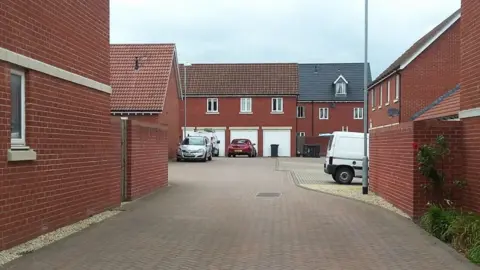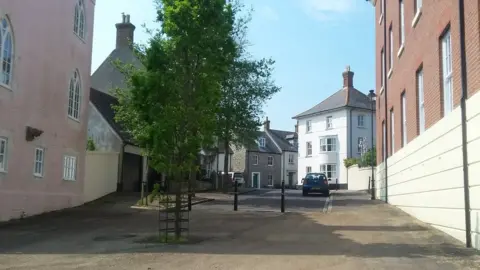Young couples 'trapped in car dependency'
 Transport for New Homes
Transport for New HomesIt must be miserable: you’ve saved for a newly-built home past the town’s ring-road, but now you're trapped too often in a metal box with wheels.
You spend hours in traffic ferrying yourself and your children around because your estate has no shops; no pub; no doctor; no school; no jobs.
A report says this is the buttock-numbing fate of numerous young couples.
It's come about because planners allowed edge-of-town housing estates where car travel is the only option.
Intriguingly, the research by a new green group – Transport for New Homes - has been backed by a motoring group, the RAC Foundation.
Researchers visited more than 20 new housing developments across England in what they say is the first piece of research of its kind.
They found that the scramble to build new homes is producing houses next to bypasses and link roads which are too far out of town to walk or cycle, and which lack good local buses.
In a jam
Jenny Raggett, researcher at Transport for New Homes, said: "We were appalled to find so many new housing developments built around the car with residents driving for almost every journey.
“As those cars head for our towns and cities they clog up existing roads. Commuter times get longer and longer. Car-based living of this kind is not good for our health or quality of life.”
 Transport for New Homes
Transport for New HomesSteve Gooding, director of the motorists’ RAC Foundation, supported the research. He told BBC News: "We need new housing developments with a genuine mix of transport options, which may include the private car but not exclude other ways of getting around.
“It’s not much fun in one of these new estates where there’s nowhere to park out front, so there are cars all over the pavements. You have to ferry your kids everywhere, and then you drive straight into a traffic jam.
“The government has got to think about this properly – we don’t just need new homes anywhere we can put them – we need quality homes. Places like Poundbury (the Prince of Wales’ development) show it is possible to get this balance right."
What housing doesn’t work?
The report says:
At Great Western Park near Didcot in Oxfordshire, residents climb over a fence to get where they need to go because footpaths with neighbouring areas are so poor.
At Castle Mead near Trowbridge in Wiltshire, people wanting the shops, community centre or pub have to use an underpass after dark – or brave the lorries on a by-pass without a footpath.
At Prior’s Hall Park near Corby in Northamptonshire, developers trumpeted the estate’s closeness to the M1 for the commute to London - but seven years since the first section was completed, there’s no shop or café on site. The area is criss-crossed by fast roads which make it hard to walk.
 PA
PAWhat housing does work?
The report praises Poundbury in Dorset – tacked on to the outskirts of Dorchester and built on land owned by the Duchy of Cornwall.
It’s built to a traditional high-density urban pattern and has shops, businesses, and 35% affordable housing. It was designed around people rather than the car.
The researchers said: “Rather than a supermarket off a roundabout, a business park on a link road, and a pub by a distributor road junction, here was everything arranged as a truly walkable neighbourhood - and it worked.
“The secret is the layout of connected streets with interesting squares and courtyards, coupled with the way that offices, small shops, cafés, pubs and even a garden centre were integrated with the homes as in an authentic small town.”
Ms Raggett told BBC News planners needed to change priorities to reproduce the success of Poundbury.
 PA
PA“The problem is that planners are measured by whether they hit their targets for new housing,” she said. ‘At the moment they just approach developers who are sitting on greenfield sites and end up peppering housing round towns without any regard to whether the land is accessible or not.”
Councillor Martin Tett, transport spokesman for the Local Government Association, called for councils to be given powers to ensure house builders contribute to local infrastructure and services as part of new development.
He said: “The planning system exists to ensure development is appropriate and residents are able to have their say.
“Councils are determined to do more in planning for new places in ways that improve air quality and promote more sustainable forms of travel but a lack of funding is a clear barrier to such investment.”
A government spokesperson said its revised planning rulebook tells developers to create high quality areas which promote walking, cycling and use of public transport.
They added: "The rules also make sure that councils put plans in place for the infrastructure needed to support new developments."
Follow Roger on Twitter.

